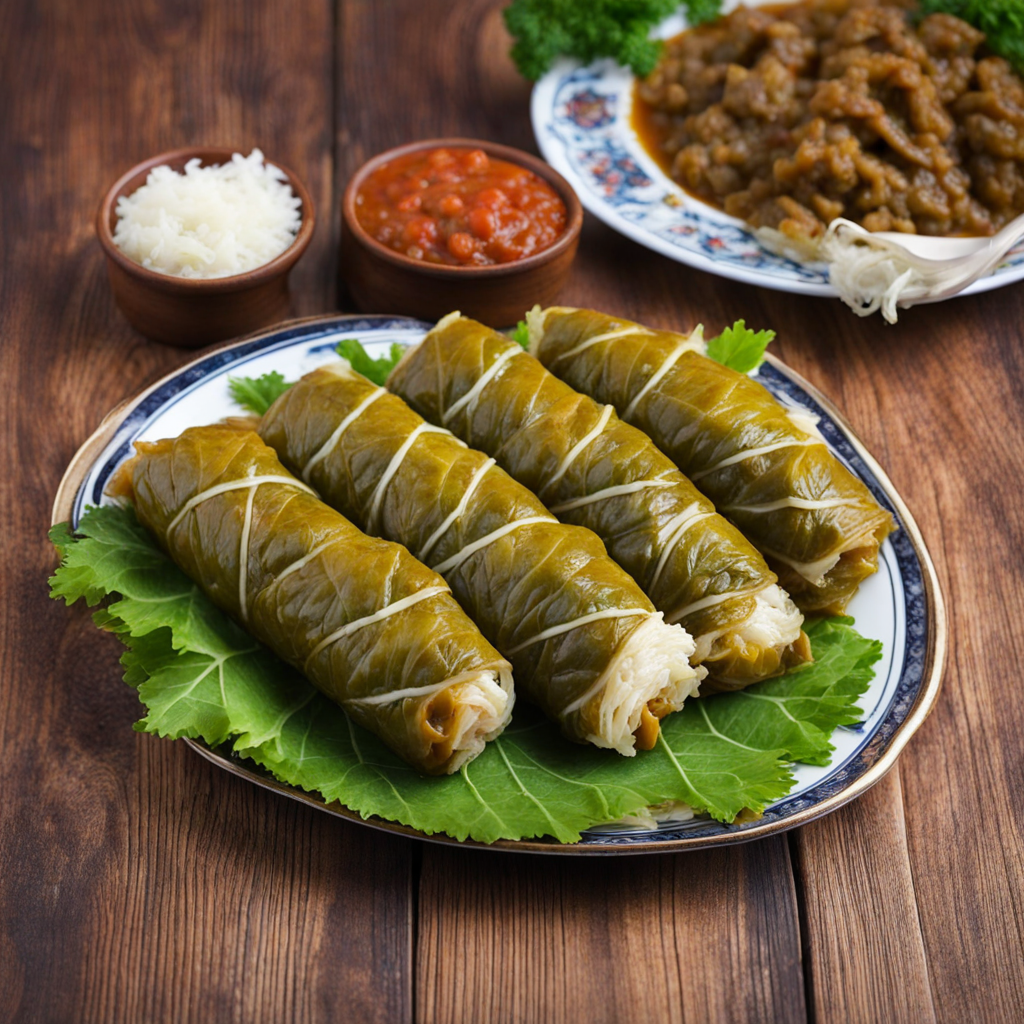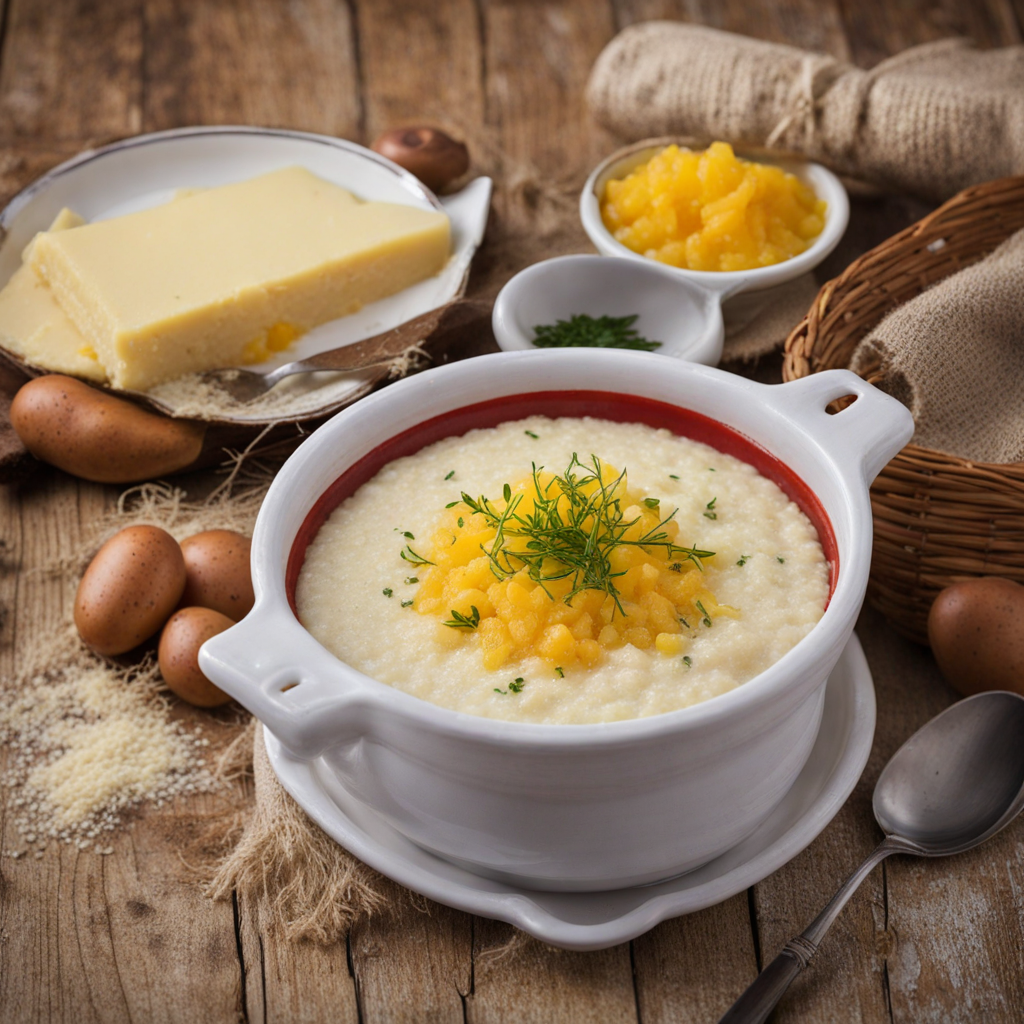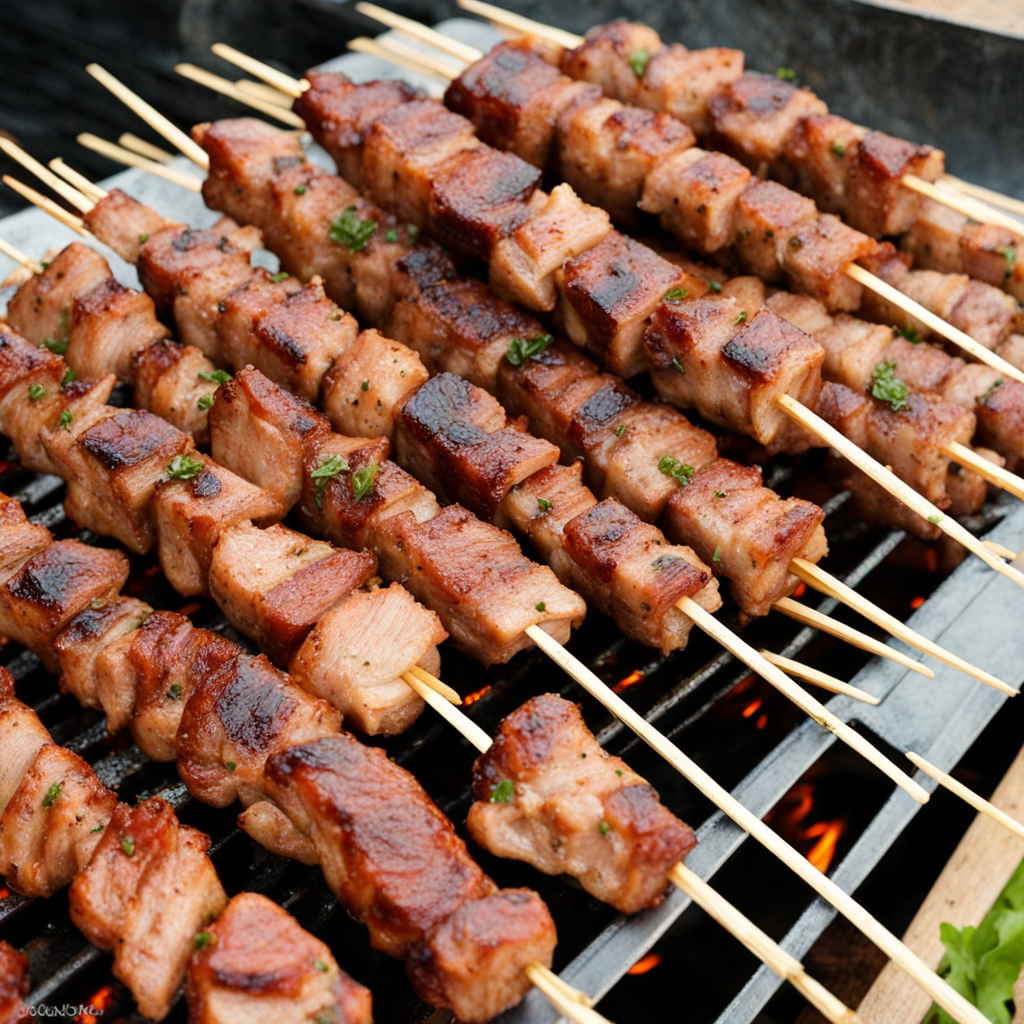Tavë Kosi
Tavë Kosi is a traditional dish from Kosovo that beautifully embodies the region's rich culinary heritage. This savory baked casserole features tender pieces of lamb or beef simmered in a creamy yogurt sauce, creating a harmonious blend of flavors that is both comforting and delicious. The meat is typically marinated with spices such as garlic, pepper, and salt, enhancing its natural flavors before being enveloped in the velvety yogurt mixture. This dish is often served with a side of fresh bread, perfect for soaking up the delectable sauce, making each bite a delightful experience. What truly sets Tavë Kosi apart is the unique preparation method that gives it a rich, golden-brown crust. The dish is baked until the yogurt thickens and develops a slight tanginess, while the meat becomes tender and infused with savory juices. The combination of the warm, creamy sauce and the succulent meat creates a satisfying contrast in textures, making it a favorite among locals and visitors alike. It's not uncommon to find this dish served during special occasions or family gatherings, reflecting its significance in Kosovar culture. As you savor Tavë Kosi, you'll discover a delightful balance of flavors—richness from the lamb or beef, the tartness of the yogurt, and the aromatic spices that captivate the palate. Each mouthful offers a taste of tradition, inviting you to explore the heart of Kosovar cuisine. Whether you're enjoying it in a cozy restaurant or trying your hand at making it at home, Tavë Kosi promises to be an unforgettable culinary journey that leaves you craving more.
How It Became This Dish
Tavë Kosi: A Culinary Gem of Kosovo Tavë Kosi, a beloved dish from Kosovo, represents much more than just a meal; it embodies the rich tapestry of the region's history, culture, and culinary traditions. This baked lamb and yogurt dish, often likened to a savory custard, has deep roots that reflect both the local agricultural practices and the tumultuous history of the Balkans. #### Origins and Historical Context The origins of Tavë Kosi can be traced back to the Ottoman period, when the empire expanded into the Balkans and introduced various culinary practices. The Ottoman influence on the region's gastronomy was profound, giving rise to a multitude of dishes that blended local ingredients with flavors from the empire. Tavë Kosi is one such dish that showcases this fusion, incorporating lamb, a staple protein in the region, and yogurt, which has been a central component of the local diet for centuries. The term "tavë" refers to the earthenware dish traditionally used to prepare the meal, while "kosi" translates to yogurt. The dish itself is characterized by its simple yet flavorful combination of slow-cooked lamb, rice, and a creamy yogurt sauce, which is baked until golden and set. The use of yogurt not only adds a distinct tang and richness to the dish but also highlights the pastoral lifestyle of the people in Kosovo, who have long raised sheep for both meat and dairy products. #### Cultural Significance Tavë Kosi holds a special place in the hearts of Kosovars. It is often prepared for special occasions, family gatherings, and celebrations, making it a quintessential comfort food. The dish is a symbol of hospitality and communal bonding, often shared among family and friends. In many Kosovar homes, the preparation of Tavë Kosi is a rite of passage, passed down through generations, with each family adding its own touch to the recipe. The dish is also emblematic of the region's agricultural heritage. Kosovo's landscape, characterized by rolling hills and fertile plains, has historically supported sheep farming, making lamb a readily available source of meat. Additionally, the abundance of dairy products, particularly yogurt, is a reflection of the pastoral lifestyle that has dominated the region for centuries. Thus, Tavë Kosi not only nourishes but also tells the story of the land and its people. #### Development Over Time As Kosovo navigated through various political and cultural changes, so too did its cuisine. The fall of the Ottoman Empire in the early 20th century and subsequent events, including the Balkan Wars and the Yugoslav Wars, shaped the culinary landscape. Despite the upheaval, traditional recipes like Tavë Kosi persisted, adapting to the changing times while retaining their core ingredients and methods. In the post-war period, as Kosovo began to rebuild and redefine its identity, there was a resurgence of interest in traditional foods. Chefs and home cooks alike sought to revive and celebrate culinary heritage, leading to a renewed appreciation for dishes like Tavë Kosi. This revival was not merely about nostalgia; it was also a means of fostering cultural pride and community solidarity in a region that had experienced significant strife. Tavë Kosi has also found its way into the broader culinary scene, both in Kosovo and among the diaspora. As Kosovars emigrated to different parts of the world, they carried their culinary traditions with them, introducing dishes like Tavë Kosi to new audiences. Today, it is not uncommon to find variations of the dish in multicultural cities, where it is celebrated as a symbol of Kosovar identity. #### Modern Interpretations In contemporary times, chefs in Kosovo and beyond have begun to put innovative spins on Tavë Kosi, exploring new flavor profiles while respecting its traditional roots. Some may choose to incorporate spices like paprika or cumin, adding depth and warmth to the dish. Others experiment with different proteins, such as chicken or even vegetarian alternatives, to cater to diverse dietary preferences. Restaurants in cities like Pristina have embraced the dish as a staple on their menus, often presenting it in a more refined manner while still honoring its humble origins. The rise of culinary tourism in Kosovo has also played a role in bringing Tavë Kosi to the forefront, as visitors seek to experience authentic local flavors. Furthermore, social media has transformed the way food is shared and celebrated. Photogenic versions of Tavë Kosi, adorned with fresh herbs or served in artisanal dishes, have become popular on platforms like Instagram, showcasing the dish's appeal to a global audience. This digital age has allowed for a cross-cultural dialogue, where traditional recipes can be shared, adapted, and appreciated worldwide. #### Conclusion Tavë Kosi is more than just a dish; it serves as a narrative vessel that carries the history, culture, and resilience of the people of Kosovo. From its Ottoman roots to its role in contemporary Kosovar identity, the dish has endured through time, adapting to changes while remaining a cherished emblem of home and hospitality. As the world continues to embrace culinary diversity, Tavë Kosi stands as a testament to the importance of food in telling stories of heritage and identity. Whether enjoyed in a bustling restaurant in Pristina or lovingly prepared in a family kitchen across the globe, Tavë Kosi remains a delicious reminder of the rich cultural heritage of Kosovo, inviting all to partake in its savory legacy.
You may like
Discover local flavors from Kosovo







